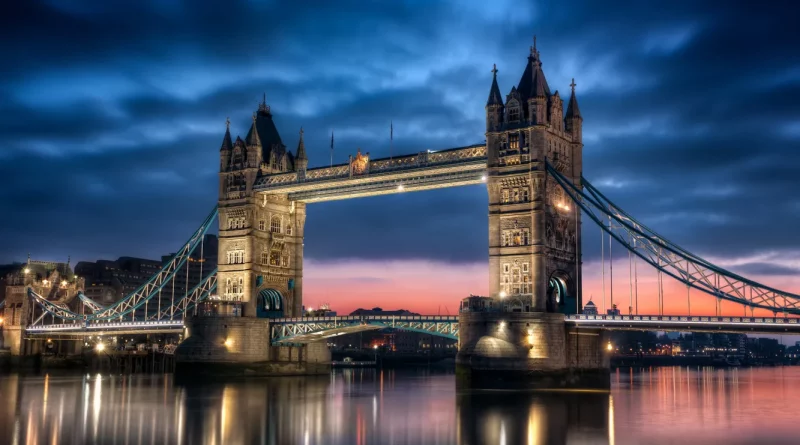Tower Bridge
Anyone who has been to the capital city of London is sure to have noticed one of its most striking landmarks: Tower Bridge. Tower Bridge is an attraction: probably nowhere else in the world can you see two towers built in the Gothic style with pedestrian galleries connecting them. The colour scheme of Tower Bridge is tasteful: the light grey stone cladding blends well with the metal pillars painted in red, white and blue.
History of Tower Bridge
For a long time, London Bridge was the only bridge over the Thames, but the development of London as the capital of the kingdom encouraged the addition of several other bridges. However, all were built to the west.
In 1876, the City of London authorities decided that a bridge should be built at the east end of the city due to population growth in that area. But first a number of problems had to be solved:
The Thames is a navigable river and a bridge had to be designed that would not interfere with the passage of ships.
The bridge had to be located in the historic centre of the city, so it had to fit in and not interfere with it.
A design competition was launched with the participation of leading architects and engineers. The organisers received more than fifty entries (these designs can now be seen in the Tower Bridge exhibition hall).
The construction of Tower Bridge
The neo-gothic drawbridge bridge was selected as the best design. It was designed by the architect G. Johnsom and the engineer J.W. Barry. Its construction began in 1886 and lasted 8 years. Five contractors and 432 people were involved in the construction of this large and beautiful structure (its length is 244 metres, and the central span, 61 metres, is divided in two).
The foundations of the Tower Bridge consist of multi-ton concrete pillars supporting two 65-metre-high steel towers. They were active as a refuge for whores and thieves during the 19th century until they were finally sealed in 1910. The towers are now part of the Tower Bridge Experience, which opened in 1982. Inside, stairs lead to the top of the bridge, offering a breathtaking panoramic view of London. The towers also serve as a ‘support’ for the 82-metre-long suspension bridges.
Tower Bridge was recognised as the most complex drawbridge ever built, with a hydraulic steam engine to power the gigantic pumps. However, its design allowed the multi-tonne bridge elements to be raised to 86° in just five minutes.
The Tower Bridge is still powered by hydraulic engines, but since 1976 the pumps have been powered by electricity instead of steam. Old hydraulic steam pumps and boilers have been incorporated into the exhibition.
Some facts about the history of Tower Bridge
- The pedestrian tunnel under the Thames that served as a passage for telecommunications cables was used as the base for the bridge.
- Unlike most drawbridges, Tower Bridge is laid out according to a special timetable prepared by the bridge staff to allow for the passage of large ships. There are no adjustments, not even for VIPs.
There are two famous events related to this feature of the bridge:
- In 1952, a red London double-decker car found itself on the bridge as it was being deployed.
- The driver accelerated and was able to jump from one edge of the resulting one-metre gap to the other.
President Bill Clinton’s motorcade was split in two by the drawbridge in 1997. Many people wrote about it at the time.
- In 1968, to celebrate the 50th anniversary of the formation of the Royal Air Force, a fighter jet flew between the towers of the bridge.
- Also that year, a Missouri businessman bought London Bridge, which was about to be demolished, mistaking it for Tower Bridge.
- In 1977 it was painted blue, white and red to commemorate the silver jubilee of Elizabeth II’s reign.
- Tower Bridge used to rise fifty times a day, now it is a fraction of that.
Tower Bridge
Address: United Kingdom, London, near Tower of London
Date opened: 1894
Overall length: 244 m
Height of structure: 65 m
Architect: Horace Jones
Coordinates: 51°30’20.0 “N 0°04’31.2 “W
You may alo like:

